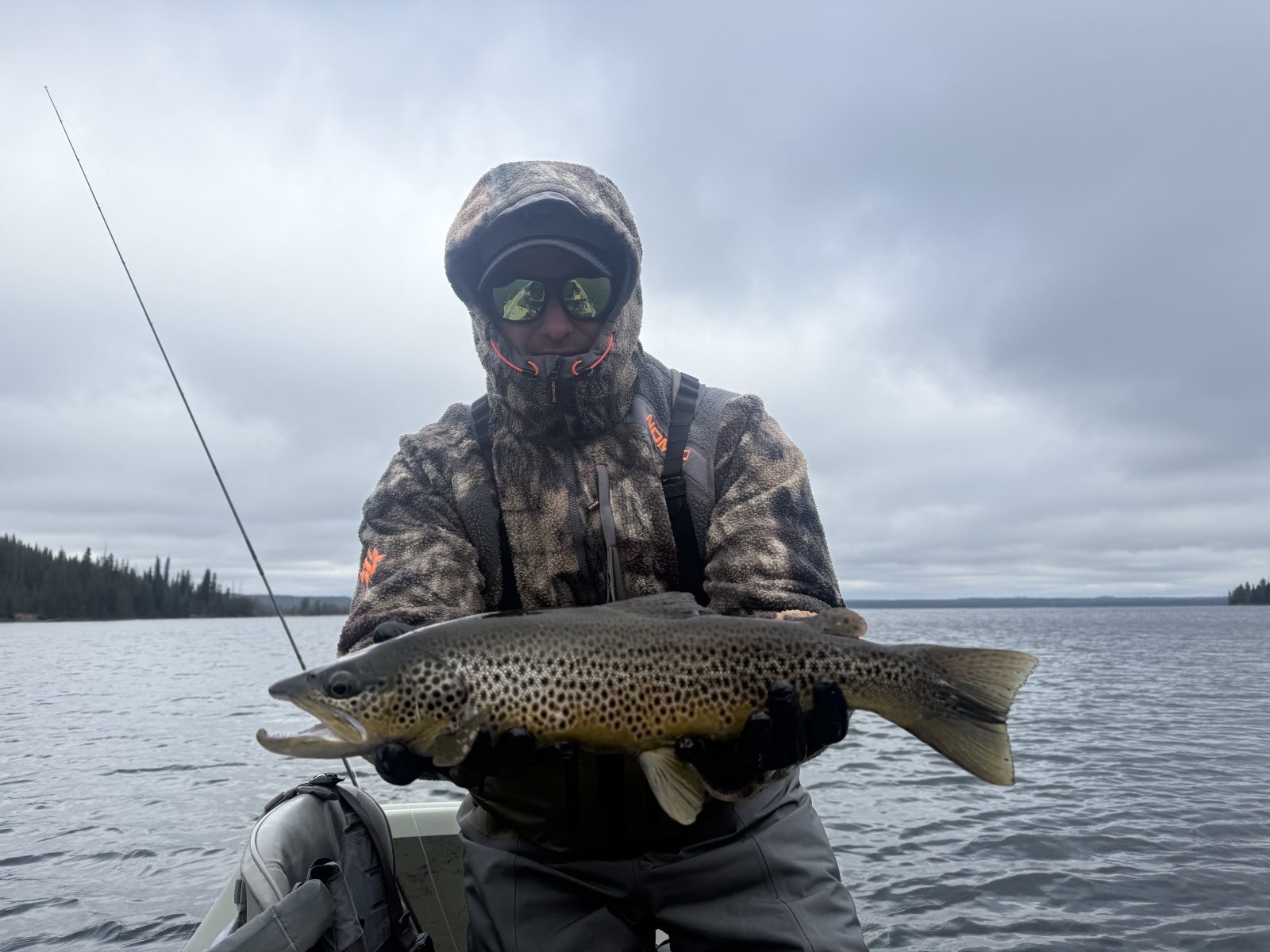
Snake River
Not exceptional hatches over the past 10 days, but we have seen a smattering of BWOs and mahogany duns after 12:30pm and there have been a couple of October caddis most days. Despite the lack of emergences, surface action has been decent to good, although fishing a dropper along with a moderately-sized attractor is getting into just as many fish. Key water to focus on include riffles, seams, eddies, and banks with woody debris. Slower currents are producing better than faster ones at the moment, except on the lower river below the Hoback confluence, where moderate currents in shallower water (think riffles and flats) are performing well.
Streamers are fishing well but can be slow in the morning before kicking into gear after 11am. As with surface flies and nymphs, slower currents are producing best, especially side channels, eddies, seam current margins, ledge rock pools, and banks with woody debris. Go with floating lines or short sinking tips in the INT to 3ips range and vary up your retrieves. Broadside retrieves are outperforming downstream and upstream retrieves.
South Fork
Flows from Palisades Reservoir have decreased significantly and currently stand at 1,500cfs. Regardless of weather, the most consistent emergence has been BWOs on just about every reach. October caddis are the next in line in terms of significance and are popping with the most intensity from Cottonwood down to Lorenzo. Surface action has been best after 1pm in riffles, side channels, slow seams, troughs, and eddies. Nymphs are producing in the same water as part of a dry-dropper rig with most eats occurring in the top half to 1/3 of the water column, so keep your dropper tippet rather short. Don’t be surprised to get several takes on you dry when fishing a dry-dropper rig, and don’t worry too much about the imitating active mayfly imitations with your dropper nymph. CDC soft hackles, caddis larva, and stonefly nymphs are working just as well.
Streamers have been working extremely well from Conant down to Lorenzo. Make sure to go small, as they are completely outperforming moderately and larger sized patterns. Bright flies are also working best, although there is an uptick in action on darker patterns on those days with cloudier weather. Productive waters to target include structure with shallow depths, riffles with moderate depths, riffle current margins, troughs, side channels, and recirculating eddies and pools. Go with sinking tips in the INT to 3ips range or full sinking hover lines and vary up your retrieves.
Flat Creek
Streamers and swimming nymphs (dragonflies and damsel flies primarily) are the best way to get at the big cutthroats actively feeding on Flat Creek at the moment. Fish these in longer runs downstream of confluences and riffles and along undercut banks and submerged structure with floating lines and sinking tips in the INT to 3ips range. The one drifting pattern consistently getting into fish on Flat Creek are cranefly larva imitations in the same water and in eddies and the head of riffles and confluences.
Yellowstone National Park
Note – Yellowstone is closed to fishing starting on Nov. 1st.
Firehole River – BWOs and micro caddis are popping later in the day – sometimes around 1pm and other days as late as 2:30pm – but it is possible to fish emergent bugs and bugs just below the surface as early as 10:30am and have good action. Key waters to target include riffles, eddies, foam lines, and submerged structure. There are times when you can swing soft hackle patterns and swimming nymph imitations in the same water, as well as along banks and in elongated pools, can be a good way to go, but this is definitely after 2pm after emergences begin.
Yellowstone Lake – Kind of the same story over the past month – Yellowstone Lake has been producing well on flats and drop-offs, with drop-offs taking the cake throughout most of the day but especially later in the day. Baitfish imitations, damsel nymphs, and dragonfly nymphs are working best and should be fished on hover lines, full sinking intermediate lines, and on long sinking tips in the INT to 3ips range. Using clean sweep lines that run at a depth of 4ips or greater is producing from time to time on shallow bars that are at depths of 20 to 30 feet.
Lewis Lake – A great place to be at the moment. Lake trout continue to spawn on shallow flats between six and ten feet of depth and, while many brown trout have already made their run and are on their beds, there is still a good amount of staging and running occurring, especially at the outlet. Don’t focus too much on flats when targeting staging browns. Instead, focus on deeper water – eight to fifteen feet – well off of drop-offs.
Snake River/Lewis River – Browns from Jackson Lake have made it up past the Lewis River confluence and the entire Snake is fishing well with streamers and egg patterns in waters where trout are pooling and running. Cutthroats are actively feeding on egg patterns and streamers as well. Try and stay off the beds and fish only for those browns that are actively pooling and running.